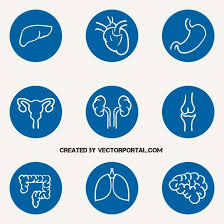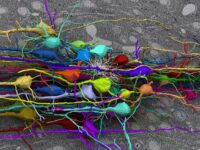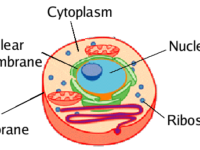On February 4, 2023, Boston hit the coldest temperature recorded since 1886 at minus 10 degrees Fahrenheit. While most of us were snug in our blankets with a warm mug of tea in hand, others were not as lucky. Lithobates sylvaticus, commonly known as the wood frog, is a fascinating vertebrate model of freeze tolerance whose study spells endless possibilities for regenerative medicine. When exposed to subzero temperatures in winter, the wood frog endures the freezing of 65% to 70% of its body and becomes metabolically inactive until spring, when it thaws as if merely waking up from a long sleep. Analyzing the biological mechanisms of this frog’s pro-survival response has inspired the development of a new long-term storage technique to extend an organ’s shelf-life pre-transplant. In their review, Rasha Al-attar and Kenneth B. Storey delve into how the L. sylvaticus survives its full-body freeze and cast a new light on cryopreservation in regenerative medicine.
The wood frog freezes from the outside in via ice nucleation, in which ice crystals on the frog’s skin trigger a cascade of ice growth into extracellular spaces while intracellular spaces remain fluid. Freezing is usually lethal due to extensive architectural damage done to cell membranes, interruption of blood oxygen flow, muscular atrophy, and significant oxidative stress. Wood frogs survive this process by enhancing the anaerobic — non-oxygen-focused — metabolism, increasing antioxidant and antiapoptotic responses, and making cryoprotectant factors more available in the body. One of these major cryoprotectants is glucose, produced by metabolizing reserves of glycogen built up in the liver during the summer months. High blood sugar content stabilizes proteins during the stress of freezing without interfering with enzyme activity. One of these enzymes is Fr10, aptly called the “antifreeze” protein. Fr10 binds directly to ice crystals to prevent them from accumulating and growing in size, which lowers the risk of tissue and cell membrane damage as the frog continues to freeze. By the time the wood frog reaches its maximum ice content, its cells are thoroughly reinforced with proteins and sugars keeping its cells from rupturing, leaving it extensively prepared to lie dormant until temperatures rise.
When it comes to organ preservation, any tissue can be frozen at subzero temperatures. What truly makes L. sylvaticus a worthwhile medical pursuit is how it thaws. Defrosting rate is proportional to the glucose concentrations in the frog’s tissues, as high sugar content lowers the melting point of intracellular fluids. Internal organs receive the most glucose, meaning that the frog thaws from the inside out. As cardiac activity is restored and blood is pumped throughout the body, organs warm up and tissues revert from anaerobic to aerobic respiration in the creation of energy for metabolic function. Over 12 hours, the wood frog resumes all normal limb reflexes, breathing, and nerve excitability, and eventually hops away to find its first meal of the spring.
“When it comes to organ preservation, any tissue can be frozen at subzero temperatures.”
Many of these changes essential to survival are regulated at the transcriptional level. Epigenetic modifications alter how accessible DNA is converted into mRNA and then protein. Similar modifications on proteins can change how enzymes interact with substrates; in the case of the wood frog, proteins such as Glycogen synthase kinase 3, which prevents glucose from being converted back into glycogen when it is needed for cryopreservation, are further stabilized to increase their activity and effectiveness. Other factors mediate the action of transcripts like those encoding components of the cell cycle. This action can suppress cell proliferation and apoptotic mechanisms to preserve the cellular structure. Metabolic rate depression needs not one, but all of these regulatory stages put in place, which is why it is increasingly complex to translate the frog’s antifreeze strategies to humans.
Regardless, how could this little frog be the solution to a global issue? As of 2023, over 100,000 candidates are waiting for an organ transplant. In the final months of 2022, only 42,888 people received organ transplants. That is a projected less than 41% of patients receiving a life-saving medical intervention. Not only is there a shortage of transplantable organs, but those which are viable require an intensive supercooling, ice-free protocol to extend their shelf-life to merely four days. On the contrary, wood frogs freeze for months without injury. If the pro-survival mechanisms of Rana sylvatica are harvested, not only can organs be transported and analyzed for safety without fear of tissue breakdown, but long-term storage drastically increases the chance for candidates to receive a transplant and begin the next chapter of their lives leaping for joy.






